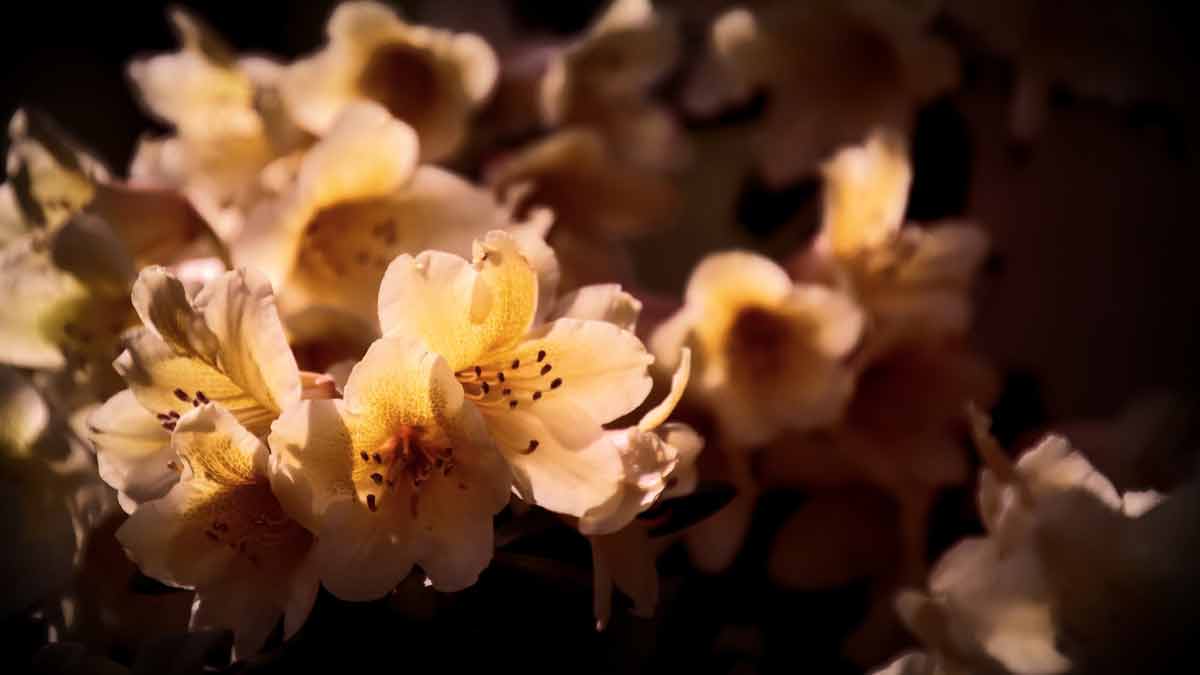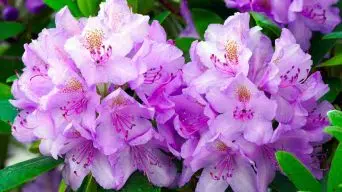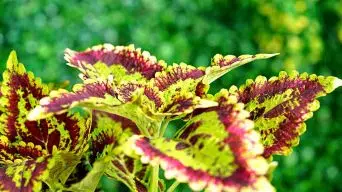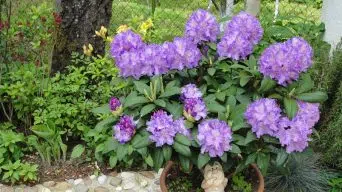Key Takeaways
- Rhododendrons are shade-loving plants but require ideal sunlight preferences for optimal growth and flowering.
- The ideal location for planting rhododendron would offer morning sun exposure followed by afternoon shade, as this helps protect the plants from the harsh midday heat.
- Soil quality is important when planting rhododendrons as they thrive in acidic soils with pH ranging from 4.5-6.0 and may suffer if planted in alkaline soils above 7.0 pH level.
- Providing natural and artificial lighting when necessary, monitoring light exposure levels, and adjusting as needed will ensure your rhododendrons receive the right amount of light to flourish.
Rhododendrons are a treasured addition to many gardens, offering vibrant colors that can brighten any outdoor space.
But as with every plant species, it is crucial to understand their unique preferences to have them thrive and look their best.
So, do rhododendrons prefer shade or sun? The answer might surprise you!
In this guide, we’ll discuss everything you need to know about these dazzling shrubs’ lighting requirements- from their ideal sunlight exposure and various factors affecting their needs to tips on providing optimal lighting conditions.
Understanding Rhododendrons And Their Lighting Needs
To take good care of rhododendrons, it’s essential to know their lighting needs.
Rhododendrons are considered shade-loving plants but require the right amount of sunlight for their best growth and flowering.
Characteristics Of Rhododendrons As Shade-Loving Plants
Rhododendrons are widely praised as shade-loving plants, making them an ideal choice for gardeners looking to add a touch of color and beauty to darker areas of their landscapes.
These attractive flower plants thrive in dappled shade environments, typically involving filtered sunlight shining through the branches and leaves of taller trees.
As shade-loving plants, rhododendrons have developed unique characteristics that help them adapt to low-light environments.
For instance, their large leaves efficiently capture the available light and maximize photosynthesis rates.
These acid-loving plants produce vibrant blooms without constant sun exposure, which sets them apart from many other flowering species.
Ideal Sunlight Preferences For Rhododendrons
Striking the perfect balance of sunlight for your rhododendrons can significantly influence their growth and blooming potential.
Generally, these attractive flower plants thrive in dappled shade or partial sun, typically light that filters through a leafy canopy.
An ideal location for planting rhododendron would offer morning sun exposure followed by afternoon shade, as this helps protect the plants from the harsh midday heat.
For instance, positioning your flowery plant beneath tall trees with high canopies will create an optimal environment where they receive gentle rays of sunshine during the early hours while enjoying a cool reprieve later on.
Factors To Consider When Determining Lighting Needs For Rhododendrons
When deciding the lighting requirements for rhododendrons, it is important to consider the climate, weather conditions, soil type, and rhododendron variety.
Climate And Weather Conditions
Climate and weather conditions play a crucial role in determining the lighting needs of your rhododendrons.
These factors can significantly affect the plant’s overall health, growth, and flowering potential.
In contrast, hot and sunny climates demand special care to prevent scorching leaves or wilting flowers.
In these situations, planting rhododendrons in partial shade or dappled light becomes essential to provide filtered sunlight that won’t cause damage while still fueling their photosynthesis process.
Additionally, areas with extreme temperature fluctuations or harsh winter winds require even more protection, such as placing them on the north side of buildings or under taller trees to shield them from harmful elements.
Soil Requirements
Rhododendrons require a specific type of soil to thrive.
They need loamy, fertile soil that can retain moisture and drain well. The ideal pH for the surrounding soil should be between 4.5 and 6.0, which is considered acidic.
It’s important to ensure that the area where you plant rhododendrons has good drainage and does not collect standing water after rain or watering sessions.
Adding organic matter like leaf mould or compost can help maintain soil quality and improve drainage while providing natural nutrients for optimal growth conditions.
Varieties Of Rhododendrons
Rhododendrons come in different varieties, and knowing which type you have will determine their lighting needs.
Here are some common rhododendron varieties:
- Large-leafed Rhododendrons – These varieties require dappled shade and should avoid full sun or deep shade.
- Hybrid Rhododendrons – These flowery plants are heat tolerant and can handle sun exposure better than most other rhododendron types.
- Early-blooming Rhododendrons – These varietals bloom in late winter or early spring, making them great for adding color to your garden early in the season.
- Deciduous Azaleas – These varieties lose their leaves in the fall but produce orange, yellow, and pink blooms in the spring.
- Evergreen Azaleas – As evergreens, these plants keep their foliage year-round and come in various colors, including white, pink, red, purple, and bi-colors.
Understanding the type of rhododendron you have is essential to providing optimal lighting, as it’ll determine how much sun or shade it needs to thrive.
How To Provide The Right Lighting For Rhododendrons
To ensure your rhododendrons receive proper lighting, it is imperative that you carefully select the optimal location and direction for planting.
Vigilantly monitor the amount of natural light they receive, ensuring they are exposed to the appropriate shade and sun levels.
If necessary, consider implementing artificial lighting to supplement their natural light intake.
Choosing The Best Planting Location And Orientation
Choosing the right planting location and orientation is crucial to ensure optimal growth conditions for your rhododendrons.
Rhododendrons prefer a spot that receives partial shade with filtered sunlight rather than direct or deep shade.
On the other hand, too much sun exposure can cause leaf scorch and limit flowering.
Additionally, it’s important to avoid areas with strong winds or extreme temperatures that could damage foliage or flower buds.
Planting on the north side of a building or wall can also provide some protection from the hot afternoon sun and help keep the soil cool during the summer months.
Remember to check soil acidity levels as well since rhododendrons are acid-loving plants; they thrive in soils with pH ranging from 4.5-6.0 and may suffer if planted in alkaline soils above 7.0 pH level.
Monitoring Light Exposure Levels
Monitoring their light exposure levels regularly is crucial to provide optimal lighting for your rhododendrons.
These plants require just the right amount of sunlight and shade to thrive.
One way to monitor light exposure is by observing any signs of stress in your plants’ foliage.
If the leaves are discolored, scorched, or wilted, this may indicate that they’re getting too much direct sun.
In contrast, if they’re yellowing or drooping, this could mean that they’re not getting enough light.
Additionally, you can use a sunlight meter to measure how much natural light the area gets throughout the day.
Aim for areas with dappled shade or morning sun rather than intense afternoon rays for ideal growing conditions.
Creating The Right Amount Of Shade Or Sun Exposure
Rhododendrons require the right amount of shade or sun depending on the variety being planted.
Here are some tips for creating optimal lighting conditions for your Rhododendrons:
- Determine your plants’ ideal location and orientation based on their lighting needs.
- Monitor light exposure levels and adjust as needed to provide dappled shade or partial shade.
- Avoid planting Rhododendrons in areas with dense shade or full sun exposure, as these conditions can negatively impact their growth.
- Consider adding structures such as trellises or arbors to create filtered shade that will protect your plants from too much direct sunlight.
- Remember that too much sunlight without a proper water supply can cause damage to your plants, so be sure to water them regularly and monitor soil moisture levels.
- If the natural lighting is insufficient, supplement with artificial lighting using grow lights to provide the necessary light spectrum for optimal growth.
Supplementing Natural Lighting With Artificial Lighting If Required
If your Rhododendrons are not getting enough natural light, supplementing with artificial lighting may be necessary.
Artificial lighting can come in the form of grow lights or LED lights and can be especially helpful for indoor plants.
These lights can provide the spectrum of light required for optimal growth conditions.
For outdoor Rhododendrons, adding additional lighting at night could also help accelerate their growth rate.
However, it’s important to consider the energy consumption costs associated with this type of supplemental lighting.
Do Rhododendrons Like Morning Or Afternoon Sun?
If you plan to plant Rhododendrons, it’s important to note that they don’t do well with full morning sun during winter.
Instead, it’s best to plant them in an area with dappled shade, particularly on the north side of a building or under trees.
Understanding The Importance Of Sun Direction
Knowing the direction of sunlight is crucial when planting and caring for rhododendrons.
These plants need direct light for at least part of the day, but too much sun can cause damage to their leaves and flowers.
Generally, it’s best to plant rhododendrons in areas that receive morning sun or filtered shade in the afternoon.
This will protect them from the intense Southern sun, which can be harmful during warmer months.
Additionally, gardeners should avoid planting these flowers on the south side of buildings or other structures as they may experience full morning sun in winter – something rhododendrons do not tolerate well.
Choosing The Best Time Of Day To Provide Sunlight
To ensure optimal growth of your rhododendrons, choosing the correct time of day to provide sunlight is essential.
Rhododendrons prefer the morning sun as it helps them dry off any dew or moisture that may have accumulated on their leaves overnight.
In contrast, afternoon sunlight can be extremely harsh and damaging to the foliage and flower buds.
When there is no option but to expose your plants to the afternoon sun, avoid doing so during the hot summer months when the sun rays are most intense.
Tips For Providing Optimal Lighting For Rhododendrons
If you want your rhododendrons to thrive, providing them with the right amount of sunlight and shade is essential.
One way to achieve this is by using natural and artificial lighting, creating shade structures, and adjusting the light exposure as necessary.
Using Natural And Artificial Lighting
Providing the right amount of natural light is crucial for rhododendrons to thrive, but sometimes it’s impossible.
If you have a shaded garden or your landscape doesn’t provide enough natural light, don’t worry; a few options are available.
First, consider using artificial lighting like grow lights or LEDs to supplement the natural light.
These can be placed strategically around your plants based on their specific needs.
Another option is to use shade structures such as umbrellas or fabric covers to regulate the amount of direct sunlight that reaches your plants.
Remember that filters like these should be removed occasionally so your plant still receives some direct sun exposure and maintains optimal growth conditions.
Adding Shade Structures
Shade structures can be a great addition to your garden, providing optimal lighting conditions for your rhododendrons.
Here are some tips on adding shade structures:
- Umbrellas: Use large outdoor umbrellas to create a shaded area around your rhododendrons.
- Shade Cloth: Install shade cloth over your rhododendrons to filter out excess sunlight.
- Arbors and Pergolas: These structures provide shade and add an aesthetic touch to the garden.
- Trees: Consider planting trees in strategic locations around your rhododendrons to provide natural shade.
- Trellis systems: These structures allow you to train climbing plants that can eventually provide shade for the rhododendrons.
Remember, it’s important not to block too much sunlight, as rhododendrons require sufficient light to bloom.
Dappled or filtered light is often best for optimal growth conditions.
Adjusting Light Exposure As Needed
It is crucial to adjust light exposure to provide optimal lighting for rhododendrons.
Overexposure to sunlight can cause damage and decline in plants grown in light shade.
On the other hand, inadequate sunlight can also negatively impact growth and flower blooming.
There are various ways to adjust light exposure based on the specific needs of your rhododendron plant.
For instance, you can provide artificial shading using a garden umbrella or add shade structures such as pergolas or trellises over their planting location.
You may supplement natural lighting with artificial lighting when adequate sunshine isn’t available.
Final Thoughts
Understanding the lighting needs of your rhododendrons is crucial for their optimal growth and beauty.
While many varieties prefer dappled shade, some can thrive in full sun with adequate water and care.
It’s important to consider factors such as climate, soil acidity, and variety when determining the best lighting conditions for your plants.
Providing natural and artificial lighting when necessary, monitoring light exposure levels, and adjusting as needed will ensure your rhododendrons receive the right amount of light to flourish.







